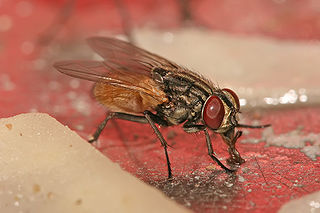
The Reichsmarine was the name of the German Navy during the Weimar Republic and first two years of Nazi Germany. It was the naval branch of the Reichswehr, existing from 1919 to 1935. In 1935, it became known as the Kriegsmarine, a branch of the Wehrmacht; a change implemented by Adolf Hitler. Many of the administrative and organizational tenets of the Reichsmarine were then carried over into the organization of the Kriegsmarine.

Emden is an independent city and seaport in Lower Saxony in the northwest of Germany, on the river Ems. It is the main city of the region of East Frisia and, in 2011, had a total population of 51,528.

Jacob Emden, also known as Ya'avetz, was a leading German rabbi and talmudist who championed Orthodox Judaism in the face of the growing influence of the Sabbatean movement. He was acclaimed in all circles for his extensive knowledge.

Emden was a light cruiser built for the German Navy (Reichsmarine) in the early 1920s. She was the only ship of her class and was the first large warship built in Germany after the end of World War I. She was built at the Reichsmarinewerft in Wilhelmshaven; her keel was laid down in December 1921 and her completed hull was launched in January 1925. Emden was commissioned into the fleet in October 1925. Her design was heavily informed by the restrictions of the Treaty of Versailles and the dictates of the Allied disarmament commission. Displacement was capped at 6,000 long tons (6,100 t), though like all German warships built in the period, Emden exceeded the size limitations. She was armed with a main battery of surplus 15 cm (5.9 in) guns left over from World War I, mounted in single gun turrets, as mandated by the Allied powers. She had a top speed of 29 knots.
Mertensophryne lindneri is a species of toad in the family Bufonidae. It is found on the coastal lowlands of eastern Tanzania and northern Mozambique to southeastern Malawi, up to 650 m (2,130 ft) asl. Its habitats are woodlands, thickets, dry forests, farmland, and even rocky outcrops; it tolerates low-intensity cultivation. Its breeding habitat is unknown but presumably includes ponds or streams. It is considered uncommon but also difficult to observe, typically found after heavy rain. The intensification of agriculture and expanding human settlements are considered likely threats to it.

Musca is a genus of flies. It includes Musca domestica, as well as Musca autumnalis. It is part of the family Muscidae.
Periscepsia is a genus of bristle flies in the family Tachinidae.

The bombardment of Madras was an engagement of the First World War, at Madras, British India. The bombardment was initiated by the German light cruiser Emden at the outset of the war in 1914.
Nyora was a 1,279 GRT cargo ship that was built in 1935 as Adrian by Nordseewerke, Emden for German owners. She was seized by the Allies in the Copenhagen, Denmark in May 1945, passed to the Ministry of War Transport (MoWT) and renamed Empire Conifer. In 1946, she was allocated to the Australian Government. In 1947, she was passed to the Australian Shipping Board and renamed Nyora.
Orlanda was a cargo ship that was built in 1920 by F Krupp AG, Emden for German owners. She was seized by the Allies in Hamburg, in May 1945, passed to the Ministry of War Transport (MoWT) and renamed Empire Conington. In 1946, she was allocated to the Newfoundland Government. In 1949, she was sold to Panama and renamed Alabe. She served until 1958, when she was scrapped.

The Emden-Pewsum-Greetsiel light railway was originally a private railway operated by the district of Emden in East Frisia in North Germany. In 1932 the district was absorbed into the district of Norden.

Emden Hauptbahnhof is the main station in Emden in the German state of Lower Saxony. It is the terminus of the Emsland Railway, connecting Emden with Münster and the Ruhr and the starting point of the East Frisian coastal railway from Emden to Norden and Norddeich, both of which are electrified. It is also connected to the city’s second busiest station of Emden Außenhafen by a line that has been electrified since 2006.
Louis Ralph was an Austrian film actor and director.

Tetragonoderus is a genus of beetles in the family Carabidae, containing the following species:

Callirhipidae is a family of beetles, found widely throughout low-latitude regions except tropical Africa and Madagascar. There are around 175 species in 7 genera. The larvae bore into dead wood and generally have a long life span of 2 or more years. The adults are generally nocturnal.
Tetragonoderus andrewesi is a species of beetle in the family Carabidae. It was described by Emden in 1934.

SMS Emden was the second and final member of the Dresden class of light cruisers built for the Imperial German Navy. Named for the town of Emden, she was laid down at the Kaiserliche Werft in Danzig in 1906. The hull was launched in May 1908, and completed in July 1909. She had one sister ship, Dresden. Like the preceding Königsberg-class cruisers, Emden was armed with ten 10.5 cm (4.1 in) guns and two torpedo tubes.

Aristolochia lindneri is a species of perennial plant in the family Aristolochiaceae. It is found in Santa Cruz, Bolivia.

The giant cave gecko is a gecko endemic to Australia.
Ethiolimnia is a genus of flies in the family Sciomyzidae, the marsh flies or snail-killing flies.












